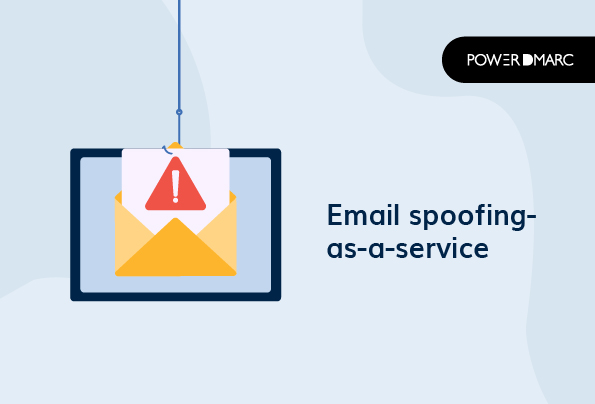In today’s interconnected world, email is an essential communication tool for businesses, governments, and individuals alike. However, the rise of Email spoofing-as-a-service has highlighted a growing concern about the security and integrity of email communication.
Email spoofing is the act of sending an email with a forged sender address, making it appear as though it was sent by someone else. This practice is often used for malicious purposes, such as phishing scams or to distribute malware. Email spoofing-as-a-service takes this practice to the next level by allowing anyone to send spoofed emails with ease and anonymity.
Key Takeaways
- Email spoofing involves sending emails with a forged sender address, which can facilitate phishing and malware distribution.
- Email spoofing-as-a-service allows users to send spoofed emails easily and anonymously for a nominal fee.
- This type of spoofing poses significant risks by enabling attackers to impersonate trusted entities, leading to potential data breaches and financial losses.
- Technical measures such as DMARC, SPF, and DKIM can help organizations verify email authenticity and reduce the risk of spoofing.
- User education and the enforcement of strict email policies are essential in combating email spoofing and enhancing overall security.
How Email spoofing-as-a-service Works
Email spoofing-as-a-service providers typically offer a web-based interface or an API that allows users to create and send spoofed emails. The service works by forging the “From” email address, which is the address displayed in the recipient’s inbox as the sender of the email.
To send a spoofed email, the user enters the email address they want to appear as the sender, the email address of the recipient, the subject of the email, and the content of the message. The service then generates the email and sends it on behalf of the user. The recipient sees the spoofed sender’s email address in their inbox, making it appear as though the email was sent by someone else.
Why is it dangerous?
The concept of email spoofing-as-a-service is simple: you pay a small fee and get access to a tool that allows you to send emails from any address. The service provider handles the technical details of spoofing, so all you need to do is enter an email address for the email you want to send.
It’s almost like sending an email from Gmail or Outlook, but instead of using your personal account and your own IP address, you use someone else’s—and the messages show up in their inbox as if they were sent from [email protected].
Simplify Security with PowerDMARC!
The Risks of Email spoofing-as-a-service
Email spoofing-as-a-service presents a significant risk to individuals, businesses, and governments. It allows attackers to impersonate trusted individuals or organizations, making it easier to trick recipients into clicking on malicious links or providing sensitive information. This can lead to data breaches, financial loss, and reputational damage.
Moreover, Email spoofing-as-a-service can be used for more sophisticated attacks, such as Business Email Compromise (BEC) scams. BEC scams are a form of email fraud that targets businesses, typically involving the impersonation of senior executives, suppliers, or partners. The attacker sends an email that appears to be from a trusted source, requesting a wire transfer or other sensitive information. This type of scam has cost businesses billions of dollars over the years.
Preventing Email spoofing-as-a-service
Preventing Email spoofing-as-a-service requires a combination of technical and non-technical measures. One of the most effective technical measures is the use of Domain-based Message Authentication, Reporting, and Conformance (DMARC) protocols. DMARC helps prevent email spoofing by verifying that the sender’s email address matches the domain from which it claims to originate.
In addition to DMARC, organizations can also implement Sender Policy Framework (SPF) and DomainKeys Identified Mail (DKIM) to authenticate the email sender. These protocols provide additional layers of security, making it more difficult for attackers to spoof emails.
Non-technical measures include user education and awareness. Educating employees and users about the risks of email spoofing and how to recognize phishing emails can help prevent successful attacks. It’s also important to establish and enforce email policies that require multi-factor authentication, strong passwords, and regular password changes.
The growing fear of As-a-Service Attacks
As-a-service attacks are a type of attack in which the hacker relies on a service provided by the target organization to obtain access to data. The most common as-a-service attacks fall under two categories: supply chain attacks and software-as-a-service (SaaS) attacks.
In supply chain attacks, an attacker uses a compromised vendor or third-party supplier to gain access to the target company’s network. In SaaS attacks, an attacker uses legitimate SaaS applications provided by the target company to gain access to its network.
As-a-service cyberattacks can be carried out in various ways. The most common technique is by infecting a computer with malware—some of which may have been unknowingly downloaded by the user—that allows hackers access to their data. Another method involves hacking into an organization’s accounting software, which can then be used to steal money from accounts. Another method involves exploiting vulnerabilities in third-party applications, such as social media apps like Facebook and Twitter, or even email clients like Microsoft Outlook or by sending out well-written fake mass emails from spoofed addresses.
Conclusion
Email spoofing-as-a-service is a growing concern for individuals, businesses, and governments alike. Attackers can use this service to impersonate trusted individuals or organizations, leading to data breaches, financial loss, and reputational damage. Preventing Email spoofing-as-a-service requires a combination of technical and non-technical measures, including the use of DMARC, SPF, and DKIM protocols, user education and awareness, and the establishment of email policies. By taking these steps, organizations can help prevent email spoofing and protect themselves from the risks associated with this practice.
Related Articles
- What Is Spam Email? Definition, Types & How to Stop It - July 11, 2025
- How to Tell if an Email Is Fake: Red Flags to Watch Out For - July 11, 2025
- Have I Been Pwned? Steps to Check, Fix, and Stay Safe - July 11, 2025
